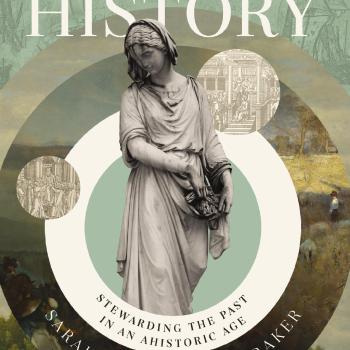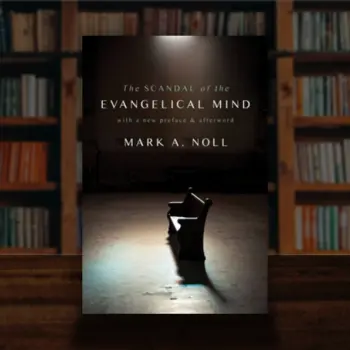“You and your d**n cards. How do you keep track of them all?” queries Adrian “Kim” Philby as he walks into the dark, shade-drawn office of James Angleton, the head of the CIA’s counterintelligence operations. Hovering over stacks of notecards strewn throughout his office while he chain-smokes cigarettes, Angleton replies, “Certain cards simply cry out for me. I am their mother.”
In light of Andrew Snowden’s recent disclosures regarding the National Security Agency’s PRISMprogram, this early scene from the 2007 TNT miniseries, The Company, provides a stark reminder of just how much data collection, cataloging, and assessment have changed in the intelligence community since the years of the early Cold War. Similarly, the manner in which historians collect, catalog, and assess primary source data has changed as well.
Although some have opined that the appellation “information age” misleadingly downplays the importance of information in the past eras, no one doubts monumental changes have taken place regarding data collection, storage, and assessment over the last several decades. By 2007, digital sources accounted for 94% of all data stored.
Although history lags behind some vocations, ongoing efforts to digitize historical materials proliferate. The digitization of documents and data, combined with the implementation of new forms of technology in the historical task, provides both positive possibilities and potential pitfalls.
Positively, digitization makes a broader swath of materials available to a wider audience. Digitization provides a lower cost alternative and quicker delivery system than traditional publishing. For example, the staff at the Jonathan Edwards Center is currently working to digitize The Works of Jonathan Edwards. In bringing the printed version of The Works (23 volumes) to publication, the editorial board decided not to include every work from Edwards’ hand. According to Harry Stout, “we didn’t think that this was responsible stewardship.” This digitization project will include already printed materials as well as non-published works. The goal is to digitize every “jot and tittle” written by Jonathan Edwards. (See Stout’s brief on the online project here.) Such an effort expands access to Edwards beyond researchers travelling to New Haven.
Further, just as technological advances make broad information-gathering surveillance programs possible, they also make organizing large amounts of data, material, and information possible, opening up new avenues of historical research. For his recent book, Sacred Scripture, Sacred War, James Byrd designed a database that allowed him to catalog and analyze over 17,000 biblical citations, a virtually impossible task in the age of hovering over note cards. As a result, we now have a much clearer understanding of how eighteenth-century Americans employed Scripture in their revolutionary efforts.
These technologies can also be employed in a collective manner. The American Converts Database (created and maintained by Erin Bartram and Lincoln Mullen) allows American religious historians to contribute stories of conversion to this larger, collaborative project. Although the project directly relates to Mullen’s dissertation research on converts, it also provides a permanent clearinghouse for the stories of conversion that historians find as they research. (You can contribute a conversion story from your research to the project here.) In the past, neither would have been possible.
At the same time, several potential pitfalls emerge for historians in the age of digitization. The primary danger, as I see it, is that some historians will succumb to the temptation to rely too much on accessible, digitized sources for research. Thus, as the digital age marches on, some significant factors must be considered.
Most importantly, we must realize that many sources will never be digitized. In some cases, the possessors of such sources have neither the resources nor the inclination to make items available electronically. Historical researchers know that treasure troves of information are often found in the most unlikely places. George Marsden, for instance, writes of “digging through some very dusty basement rooms (xix)” at Fuller Seminary, while researching material for Reforming Fundamentalism: Fuller Seminary and the New Evangelicalism. Even in a digital age, dusty basement rooms (and family attics with boxes of letters) will continue to exist, yearning for discovery so that their progenitor’s stories can be told. Such sources cannot be accessed remotely but require old-fashioned archival (and sometimes detective) work.
In other cases, the possessors of materials want to control access to content. For example, many Christian groups with ongoing ministries attempt to balance granting access to researchers with the possible negative effects that such scholars’ projects might have on their continuing ministries. Some will grant access to individual researchers with clearly defined projects (and signed research agreements), but are unwilling to make their documents openly accessible.
In a similar vein, digitization can mask some fruitful venues for research. Marginalia, for instance, can often enlighten a researcher to the viewpoint of the comment-writer in ways that correspondence or other official documents do not. Thus, going through someone’s personal copies of magazines or books becomes inestimably valuable. Sadly, it may be that, in the age of digitization, once a “clean copy” of such materials gets digitized, the impetus for preserving other copies–including those with personal marginal notes–fades.
Manuscript drafts, with mark-up, insertions, and deletions are also instructive. The Carl Henry Papers housed in Trinity  Evangelical Divinity School’s Rolfing Library contain several draft copies of chapters from Confessions of a Theologian. What Henry chose to excise, adjust, and polish in the writing process reveals fruitful information that the final copy does not. Both marginalia and draft copies emerge most often as incidental additions to intentional archival research. It seems doubtful that either will become a consistent focus for digitization efforts.
Evangelical Divinity School’s Rolfing Library contain several draft copies of chapters from Confessions of a Theologian. What Henry chose to excise, adjust, and polish in the writing process reveals fruitful information that the final copy does not. Both marginalia and draft copies emerge most often as incidental additions to intentional archival research. It seems doubtful that either will become a consistent focus for digitization efforts.
Along the same lines, ephemeral materials often prove useful if they can be contextualized. In my own research, I have been able to identify, with reasonable certainty, the church from which a bulletin insert came based on its proximity to other materials in a stack. I am fairly certain that viewing the insert remotely would have significantly hindered my ability to make this determination.
Furthermore, physical presence among the sources benefits the researcher in several ways. In my experience, personal conversations with archivists, corporate librarians, and others reveal connections and sources for further investigation that transcend anything that could be digitized. Steve Gray at World Vision Inernational, David Malone at the Wheaton College Archives, Bob Shuster at the Billy Graham Center Archives (Wheaton, IL), and Bill Sumners of the Southern Baptist Historical Library and Archives all provided me with important information and/or leads. Some of these emerged from intentional conversations about historical subjects, others from low-key conversations. If the materials I sought had been available electronically, I would have missed out on their valuable historical insights.
Finally, when doing archival research, an historian develops an intuition regarding his/her the subject or subjects of study. Thumbing through documents with marginalia, discerning an order to what appears—at first glance—to be a chaotic organization system, and other aspects of such efforts begin to give the researcher a sense about the people, subjects, and movements being researched. At its best, that sense helps the historian bring the materials together in a plausible narrative that brings the historical actors alive.
For these reasons, I deem it crucial that historians both embrace the research possibilities technology brings to our discipline while simultaneously insisting on maintaining (and using) physical archives and depositories of research data.
I am eager to hear from others on this topic, and hope that you will take time to comment.
*This is the second of two posts on this topic. The first addressed the democratizing effects of the information age on history as a vocation.












